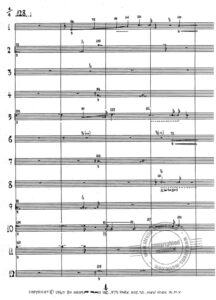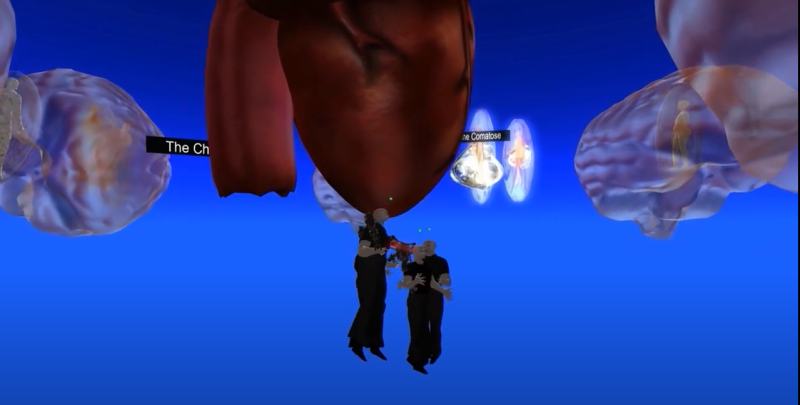Ximena Alarcón introduces the history and practice of Telematic Sonic Performance, which she broadly defines as a performance playing with words and sounds between people in distant locations using the Internet.
Part one explores the history, context, and practices of Telematic Sonic Performance
Part two looks at the technical elements of performing telematically, including software.
My intention is to open routes for the reader to start experimenting either with music making, for listening between distant locations using sonic improvisation, conversation, telepresence, or for exploring any performative aspect through this medium.
The pioneer composer Pauline Oliveros, introducing her Tele-musical Performances which she created since 1991 asked “Why would anyone care to perform music between distant locations?”. This once futuristic question, now has more immediate answers contextualized in our global historical confinement: many people suddenly have become interested in this art, which has been until now part of a relatively small community.
I would like to invite you to think why would you like to connect with others creatively using sound between distant locations, at this historical time.
Names: Telematic, Networked, Transmission, Relational, Distributed
Last Names: Music, Sound, Sonic, Performance, New Media Performance Art, Listening
While sound artists, musicians, and new media and performing artists share the practice of performing in the distance with sounds and also visuals, via the Internet or radio, each practice might call this experience differently and explore it according to its artistic intentions.
John Cage’s Imaginary Landscape No 4 (1951), a composition for 24 performers and 12  transistor radios, and Max Neuhaus’ Public Supply (1966) —a mix of calls coming into ten telephones through WBAI radio station in New York—are key historical moments in sound art. They brought political ideas of democratic listening in two directions. In Computer Music, The Hub, a Computer Network Music Ensemble formed in 1986, became a historical reference, for collaborative music making using networked computers with their own hardware and software designs.
transistor radios, and Max Neuhaus’ Public Supply (1966) —a mix of calls coming into ten telephones through WBAI radio station in New York—are key historical moments in sound art. They brought political ideas of democratic listening in two directions. In Computer Music, The Hub, a Computer Network Music Ensemble formed in 1986, became a historical reference, for collaborative music making using networked computers with their own hardware and software designs.
MUSIC
Since late 90’s and with high-speed Internet network, one encounters the practice of Telematic Music Performance, or Networked Music Performance. Eric Lemmon suggests that “telematic music will be designated as a musical practice that is more overt in its political and social goals, while networked music is conceived more broadly and focuses on the mobilization of a certain kind of technology for music making.”
One of the first challenges for musicians using the Internet network to perform is the delay of incoming and outgoing signals. To offer an idea of representative works in telematic music and how the medium “feels”, you could listen to Terry Riley’s “In C” taken to the telematic medium by Rob Hamilton and Juan Pablo Cáceres in 2009. They use Jacktrip strategically to solve the perception of delay, in this piece where musicians need to synchronize.
Trying to merge physical and virtual realities and questioning feelings and needs for embodiment, other musicians have used platforms such as Second Life helped by 3D visuals. A key example is the piece Rotating Brain Beating Hearts (2010) a collaboration featuring Pauline Oliveros, the Avatar Orchestra (Tina Pearson, Norman Lowrey, Andreas Müller), and Stelarc. Their intention is the synchronization of “bodies, sounds, images, lights, texts in real-time.”
Intentions in the making of telematic music go further than playing together and suggest that this is an artistic form that brings together people across the world to balance their social representation in music making. For instance, Nela Brown’s Female Laptop Orchestra, bringing together women to play across the globe, and the Ethernet Orchestra, led by Roger Mills and which performs inter-cultural improvisation, are interesting current examples of this extended intention.
In the present context of the Covid-19 pandemic, seminal works of Pauline Oliveros have been performed, bringing more than 500 people together (musicians and not musicians) through listening and sounding across the globe, in the World Wide Tuning meditation. New generations of composers also bring electronic music making which benefits of the low demand of streaming data producing midi sounds, such as composer Shelly Knotts, who also organises the Network Music Festival, or the online-based platform Estuary, which permits musicians to play using live coding.
Composers such as Sarah Weaver have conducted research and composition for the telematic medium and her work brings together musicians and artists in NowNet Arts: the first organisation promoting and researching networked and telematic music for social change.
SOUND ARTS
The radiophonic experience of transmission in terms of live unidirectional streaming, has found a way for connecting urban and rural locations across the world in yearly events such as Reveil, to experience 24 hours of streaming from distant locations. People all over the world position open mics, using Raspberry Pi’s and mobile apps such as LiveShout, to experience “distributed listening.” Streams can be heard through Soundmap, a platform developed by the organisation Locus Sonus.
Franziska Schroeder suggests that in the networked medium performers experience networked listening, in which the body is performing as if it was “in an in-between state”. There is a de-centering of performers’ attention, in her own words:
resisting one’s self-preoccupation in order to allow for the essential unselfing, a state of moving from oneself to the other. [link]
In my own work, I have explored listening to the in-between sonic space, a liminal space where we might locate and connect between memories of place, in the context of geographical migration. For six years I created the series of telematic sonic performances Networked Migrations, using bidirectional audio streaming technologies and incorporating unidirectional streaming. I used Deep Listening practice with improvisers, and through it I witnessed the emergence of migratory narratives improvising with letters, words, languages, dreams, pre-recorded sounds, and live streaming from urban spaces.
As a result, people raised awareness of their multidimensional condition as migrants connecting to themselves (memories and dreams), to others who are physically close, and to the ones that are distant, mediated by telematic technologies and sound. I have called this experience relational listening, which brings the relationality of migratory aesthetics, and stimulates connections to be made while in dislocation, leading to transformation of feelings and healing. In my last project INTIMAL, I have specifically created a system of interfaces for relational listening in telematic sonic performances, exploring sense of place and the feeling of presence in migratory contexts. I am interested in creating an embodied dream-like space connecting physical and virtual spaces. Within the connection, I am interested in inviting one’s body to move, detaching from the screen-based interface, walking as in exploring physical place with others, and at the same time, feeling tele-presence connecting with the ones that are far, in the distance, with the transmission and sonification of breathing data.
NEW MEDIA PERFORMANCE ART
New Media and performance artists have questioned the medium and explored telepresence, embodiment, intimacy and mixed realities, focusing on the use of video and other forms of multimodal transmission. Key examples are Paul Sermon’s Telematic Dreaming (1992), using ISDN digital telephone network for video transmission connecting two different rooms in which people share a bed telematically. It questioned trust, revealing emotions such as pleasure which make us experience intimacy, and pain and violence that make us feel detached of the projected image of the body.
mMore recently, Distant Feelings, a series by Annie Abrahams (with Lisa Parra and Daniel Pinheiro), invites people to be together, in a video-conferencing platform “eyes closed, not talking.” This is interesting from the perspective of listening and being with others across the distance with non-verbal communication, and without intended body movement and gestures. Roger Mills and the Ethernet Orchestra explore presence in Distant Presences (2007) using sounds and moving image in the Visitors Studio platform by Furtherfield. Artist Helen Varley Hamieson embraces feelings between distant locations in her last work Love Letters (2020), developing and using the multimodal free platform Upstage.
Thus, artistic intentions embrace the choice and creation of technologies of audio and audiovisual transmission as well as its challenges. In my experience, any encounter with these telematic technologies shapes and usually “dislocates” any pre-conceived ideas of sounding, listening, presence and collaborating with others.
Dr Ximena Alarcón is a sound artist interested in listening to in-between sonic spaces in the context of human migration. Since 2012, Ximena has practiced the making of telematic sonic improvisatory performances with people sharing experiences of migration all over the world. She includes Deep Listening® practice and improvisation, as forms of expanding the perception of place, space, time, identities and narratives, using a wide range of technologies. Ximena has collaborated with sound artists, musicians and performance artists, exploring possibilities and challenges of this medium. She is a Sound Artist Researcher and Project Leader of INTIMAL Project, and teaches Deep Listening practice using online and physical locations.


